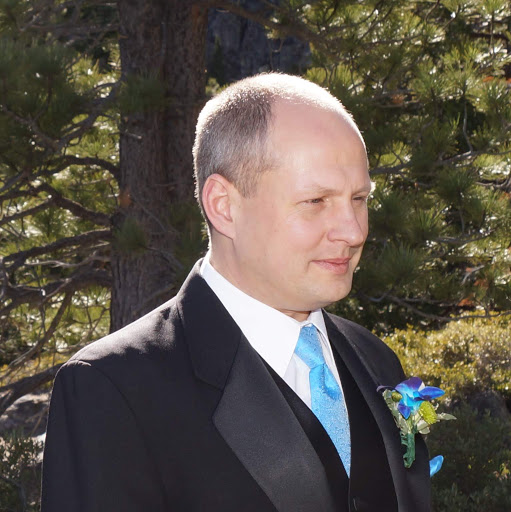Don F Kendall
age ~81
from Port Charlotte, FL
- Also known as:
-
- Don S Kendall
- Donald Kendall
- Phone and address:
-
9470 Rosebud Cir, Port Charlotte, FL 33981
(941)8280326
Don Kendall Phones & Addresses
- 9470 Rosebud Cir, Pt Charlotte, FL 33981 • (941)8280326
- Port Charlotte, FL
- 4105 Sampson Rd, Silver Spring, MD 20906 • (301)9460640
- Celina, TX
- 306 Ridge St, Lovingston, VA 22949 • (434)2634838
- Allen, TX
- 1005 Brookview Dr, Allen, TX 75002 • (972)7278682
Us Patents
-
Composite Semiconductor Structures
view source -
US Patent:40657426, Dec 27, 1977
-
Filed:Jun 23, 1975
-
Appl. No.:5/589731
-
Inventors:Don Leslie Kendall - Richardson TX
Millard Monroe Judy - Dallas TX -
Assignee:Texas Instruments Incorporated - Dallas TX
-
International Classification:H01C 706
H01L 2702
H01L 2906 -
US Classification:338 9
-
Abstract:Disclosed is a method for providing electronic semiconductor devices and the devices produced thereby utilizing an orientation dependent etch to selectively provide grooves in a monocrystalline silicon substrate having a crystal orientation of (110). By selectively etching with an orientation dependent etch to provide deep grooves having substantially parallel sidewalls and thereafter refilling with an appropriate material of the appropriate conductivity, a plurality of semiconductor electronic devices are provided.
-
Spreading Resistance Thermistor
view source -
US Patent:39367894, Feb 3, 1976
-
Filed:Jun 3, 1974
-
Appl. No.:5/475712
-
Inventors:Walter T. Matzen - Richardson TX
Don L. Kendall - Richardson TX -
Assignee:Texas Instruments Incorporated - Dallas TX
-
International Classification:H01C 704
-
US Classification:338 22SD
-
Abstract:A spreading-resistance silicon thermistor having high-precision values of resistance and temperature coefficient of resistance (TCR) is produced by a high-volume, low-cost, photolithographic technique, wherein multiple thin-film contacts are tested and selectively trimmed to permit computerized control of precision resistance values in a production-line operation.
-
Large Value Capacitor
view source -
US Patent:39627136, Jun 8, 1976
-
Filed:Oct 25, 1973
-
Appl. No.:5/409509
-
Inventors:Don L. Kendall - Richardson TX
Walter T. Matzen - Richardson TX -
Assignee:Texas Instruments Incorporated - Dallas TX
-
International Classification:H01L 2993
-
US Classification:357 14
-
Abstract:Disclosed is a semiconductor capacitor which utilizes the volume of the semiconductor substrate in which it is formed to create increased surface area and thereby to provide increased capacitance. The surface area is increased by forming selectively spaced grooves in the surface of the semiconductor substrate and utilizing the sidewalls of the grooves as surface. A thin layer of dielectric is formed over the increased surface area, and thereafter a metal layer is formed over the dielectric layer to provide a dielectric capacitor. An active junction P-N capacitor may be formed instead of a dielectric capacitor by forming a P-N junction comprising the increased surface area, and thereover forming the metallized contact.
-
Large Value Capacitor
view source -
US Patent:40178854, Apr 12, 1977
-
Filed:Dec 13, 1974
-
Appl. No.:5/532334
-
Inventors:Don L. Kendall - Richardson TX
Walter T. Matzen - Richardson TX -
Assignee:Texas Instruments Incorporated - Dallas TX
-
International Classification:H01L 2704
H01L 2904
H01L 2992 -
US Classification:357 51
-
Abstract:Disclosed is a semiconductor capacitor which utilizes the volume of the semiconductor substrate in which it is formed to create increased surface area and thereby to provide increased capacitance. The surface area is increased by forming selectively spaced grooves in the surface of the semiconductor substrate by orientation dependent etches and utilizing the sidewalls of the grooves as surface. Groove depth is limited to a predetermined value by etching time, geometrical constraints, or by etch stops. This provides for precise control of capacitance values on a batch or commercial basis. Increases up to at least 100-fold in capacitance as compared to a flat capacitor structure as possible. A thin layer of dielectric is formed over the increased surface area, and thereafter a conducting layer is formed over the dielectric layer to provide a dielectric capacitor. An active junction P-N capacitor may also be formed.
-
Vertical Multijunction Solar Cell
view source -
US Patent:39697460, Jul 13, 1976
-
Filed:Dec 10, 1973
-
Appl. No.:5/423630
-
Inventors:Don Leslie Kendall - Richardson TX
Francois Antoine Padovani - Dallas TX
Kenneth Elwood Bean - Richardson TX
Walter Theodore Matzen - Richardson TX -
Assignee:Texas Instruments Incorporated - Dallas TX
-
International Classification:H01L 2904
H01L 3106
H01L 2120
H01L 21308 -
US Classification:357 30
-
Abstract:Disclosed is a method of fabricating a vertical multi-junction cell and the solar cell produced thereby, utilizing an orientation dependent etch to selectively provide parallel grooves in monocrystalline silicon body, followed by the introduction of doping impurities of the opposite conductivity type from the silicon body to provide PN junctions. In some instances the grooves are filled with silicon of the same conductivity type as the silicon body.
-
Integral Honeycomb-Like Support Of Very Thin Single Crystal Slices
view source -
US Patent:39363295, Feb 3, 1976
-
Filed:Feb 3, 1975
-
Appl. No.:5/546378
-
Inventors:Don Leslie Kendall - Richardson TX
John C. Knowles - Dallas TX -
Assignee:Texas Instruments Incorporated - Dallas TX
-
International Classification:H01L 2120
-
US Classification:148187
-
Abstract:The disclosure relates to the formation of very thin silicon slices, 1/10 of a mil, and the mechanical strengthening of such thin silicon slices and to the formation of electronic circuitry in such slices and the use thereof. These slices are formed, in accordance with one embodiment of the invention, by etching grooves in an n+ wafer using an orientation dependent etch and etching along the {111} plane in {110} n+ wafers. After oxide removal, the surface of the wafer opposite the grooves is epitaxially coated with n-type silicon and the original grooves are then further etched by an electrolytic etch or by a concentration dependent etch which will remove only the n+ material, thereby leaving the thin wafer with a honeycomb-like supporting structure with struts in the shapes of parallelograms, diamonds and the like. The thin slice can be used to purify electron beams since, for given energies, only ions passing in the direction of the lattice structure or along the channel will completely pass through the slice, the other ions being stopped by collisions with the atoms of the silicon slice. The slice can also be used as a channel multiplier since light impinging on the slice will generate electrons which will pass between struts or honeycomb-like members and gradually pick up additional electrons by secondary emission.
Name / Title
Company / Classification
Phones & Addresses
Owner
RMCP Office Supply
Rocky Mountain Computer Products Ltd.
Ink Toner Cartridge Stores. Office Supplies. Printers- Sales/Service/Supplies
Rocky Mountain Computer Products Ltd.
Ink Toner Cartridge Stores. Office Supplies. Printers- Sales/Service/Supplies
Bay 13, 2928 - 18 Street NE, Calgary, AB T2E 7B1
(403)2167283, (403)2167284
(403)2167283, (403)2167284
Resumes

Lawyer At Self
view sourcePosition:
lawyer at self
Location:
United States
Industry:
Law Practice
Work:
self
lawyer
kendall law frim 1970 - 2009
lawyer
lawyer
kendall law frim 1970 - 2009
lawyer

Don Kendall
view sourceLocation:
United States
Youtube
Flickr
Googleplus

Don Kendall
Work:
Kencove Farm Fence - President
Education:
Carnegie Mellon University - Business / Computer Science

Don Kendall
Education:
Carnegie Mellon University - Business / computer science
Plaxo

Don Kendall
view sourcegrubb ellis

Don Kendall
view source
Don Kendall
view source
Don Robert Kendall
view source
Don Kendall
view source
Don Kendall
view source
Don Kendall
view source
Don Kendall
view source
Don Kendall
view sourceClassmates

Don Kendall
view sourceSchools:
Hodges Elementary School Mesquite TX 1967-1968
Community:
Craig Robinson

Don Kendall | Buckingham ...
view source
Don Kendall, Central High...
view source
Central High School, Lani...
view sourceGraduates:
Janet Gesiorowski (1975-1979),
Gary Toews (1968-1972),
Maureen Senko (1970-1974),
Don Kendall (1973-1977),
Laureen Balzer (1983-1986)
Gary Toews (1968-1972),
Maureen Senko (1970-1974),
Don Kendall (1973-1977),
Laureen Balzer (1983-1986)

East Fannin High School, ...
view sourceGraduates:
Don Kendall (1965-1969),
Joel Walker (1972-1976),
Patricia Dorman (1981-1985),
Charles Parris (1952-1956),
Oscar Buchanan (1962-1966)
Joel Walker (1972-1976),
Patricia Dorman (1981-1985),
Charles Parris (1952-1956),
Oscar Buchanan (1962-1966)

Hodges Elementary School,...
view sourceGraduates:
Don Kendall (1967-1968),
Jennifer Roberts (1986-1992),
Robin Matuszkiewicz (1981-1987)
Jennifer Roberts (1986-1992),
Robin Matuszkiewicz (1981-1987)
Get Report for Don F Kendall from Port Charlotte, FL, age ~81













